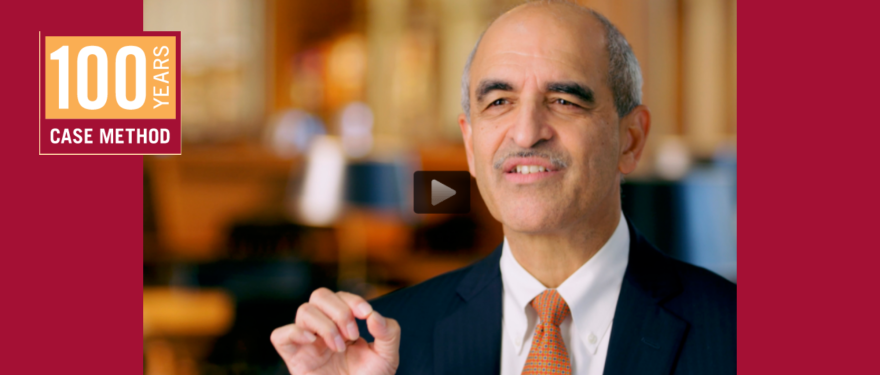VIDEO TRANSCRIPT
Dean Srikant Datar:
2021 brings a wonderful milestone: the 100-year anniversary of the introduction of the case method at Harvard Business School.
I am excited to mark this moment in time as we both celebrate the enduring nature of cases and participant-centered learning, a hallmark of the school, and look forward to what innovations in teaching and learning the next 100 years might bring. The very first case, General Shoe Company, was published in 1921. It was written at a time when the field of management education was still quite new and the US was struggling with industrialization, urbanization, and corruption.
HBS had been founded only 13 years earlier and didn't have a distinct pedagogy. However, my wise predecessor, Dean Wallace Donham strongly believed that the best way to teach business education was by discussion, not by lecture. And he saw a great example of how it could be done at Harvard Law School. His visionary approach has not only endured for a century here at HBS, but also had an impact on hundreds of other business schools, thousands of companies, and millions of managers around the world. I think it's fair to say that the case method has withstood the test of time.
The case method enables students to learn to interpret and analyze information, consider alternatives, decide on a plan of action, and persuade others about their point of view. Students learn how to learn. To practice drilling down to the root cause of issues, asking questions, and listening to others' viewpoints. It educates for judgment at a moment when business leaders are being asked to help address society's most pressing problems, economic inequality, a global pandemic, and a changing climate. These skills are more vital than ever.
While cases may look different in the future, embracing more interactive technologies, incorporating more real time information, the fundamental approach of discussion, debate, and deliberation undoubtedly will last well into the next century too. I invite you to celebrate the enduring nature of the case method over the next several months. Visit the website and forthcoming library exhibit, watch our faculty video series, and of course, join in case discussions whenever you can. I look forward to marking this wonderful moment together with all of you.

